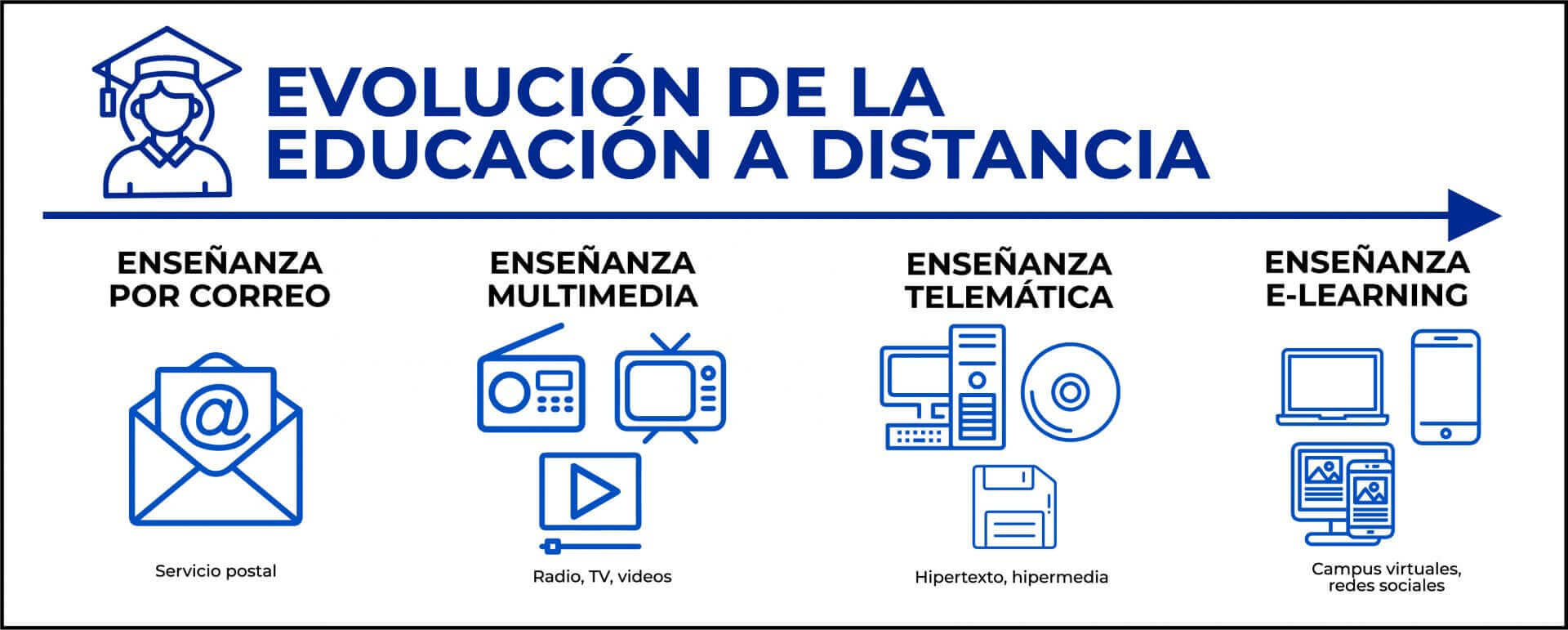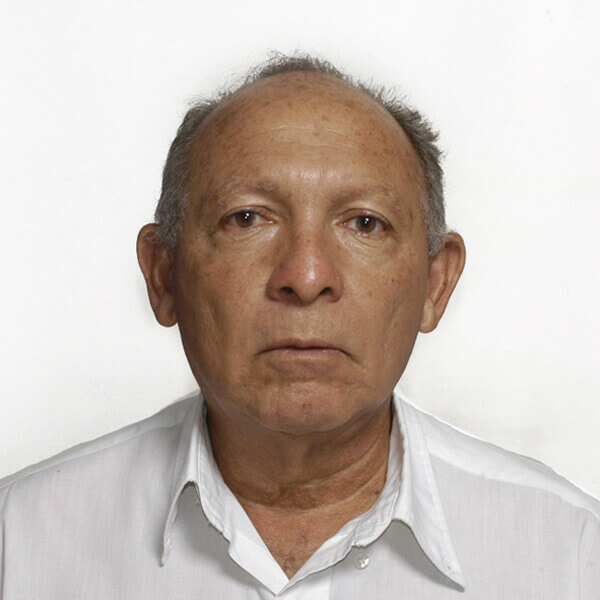This process has existed practically since human beings have the use of reason, but it is when writing appeared and the printing press was invented in the mid-nineteenth century that the use of remote teaching as a means of learning for educational purposes grew exponentially, then progressively with the emergence and insertion of ICT (Information and Communication Technologies), it is consolidated and is practically immersed in our daily work.
Once the World Health Organization (WHO) declared in March 2020 that the disease caused by COVID -19 should be characterized as a pandemic, the world speeds up, many things change, including the way to continue educating the population at all levels and in all scenarios, so that governments, schools, high schools, academies, universities, companies, teachers, instructors, students, etc… decompress the tools, strategies and ICT platforms of remote teaching in just days.
Teaching : Process of transmitting a series of knowledge, techniques, standards and/or skills.
Learning : process through which skills, knowledge, behaviors and values are acquired. This as a result of study, experience, instruction, reasoning and observation.
Education : process of facilitating the learning or acquisition of knowledge, as well as skills, values, beliefs and habits. The educational process occurs through research, debate, storytelling, discussion, teaching, example and training in general.

The evolution over time of Remote Teaching has been marked by the technological progress that ICTs experience day by day, both in hardware and software, and it is said that we are entering the fifth evolutionary generation of this process, the proper use of TICS opens new horizons, creates new challenges and demands, forces educational institutions to stay updated when using platforms that respond to the needs of their users. Therefore, investment in state-of-the-art technologies to offer Remote Teaching is imperative today even more so when the COVID – 19 pandemic and its variants mercilessly threaten us, special emphasis must be made regarding the leading role of Instructors, teachers, facilitators , students, pupils, and recipients, you have to update YES or YES to advance in this fascinating world of the Teaching-Learning process.
Categories Remote Teaching
Remote Teaching includes two main categories: Synchronous Remote Teaching and Asynchronous Remote Teaching, Synchronous includes Online Teaching and Asynchronous includes Distance Teaching and Emergency Remote Teaching.

Define the basic terms to introduce people to this world of Remote Teaching, (a process that we experience daily, every time we use a telephone, smartphone, PC, laptop, use the Internet, consult Dr. Google, open a Social Network, we watch TV, etc.) is necessary to locate ourselves, to keep up to date if we want to continue educating ourselves and be competitive, to have a vision of study proposals for our children, grandchildren, friends; that is the intention of this writing open to discussion, following the precept of learning something new every day in the digital world we live in, always with an open mind (Open Mind to Learn).
Synchronous Teaching.
The word Synchrony alludes to a coincidence in time or to the simultaneity of facts or phenomena, for this reason a synchronous event is an activity that occurs in temporal correspondence with another, that is, at the same moment, for this reason Synchronous Teaching is defined as a process that takes place in real time with the participants connected simultaneously online and depending on the objective of the activity to be carried out, it can be unidirectional or bidirectional.
online education
Process where teachers and students interact in a digital environment using ICTs and the Internet synchronously with a stable network signal that allows the activity to be carried out, the teacher has to make an extra effort to form a group, have an adequate workspace, ventilated, bright and comfortable, the group must coordinate the time for the simultaneous connection. This environment is the closest thing to a classroom.
The main advantage of this activity is that, being in real time, it allows immediate feedback that makes it easier to clarify doubts, ask questions and interact instantly.
Asynchronous Teaching.
The word asynchrony refers to the event that does not take place in full temporal correspondence with another event. Based on this, Asynchronous Teaching is defined as the process in which the participants are not involved at the same time, this modality allows access to the content of the class at any time and in any place. The teacher or whoever prepares the content to be taught must host it on a platform that is always available using the appropriate ICTs depending on the topic to be addressed, this process can also be unidirectional or bidirectional.
Virtual education.
Asynchronous process where technological resources are necessarily needed to access and elaborate the information, the material to be studied will be uploaded to the platform selected by the Professor or will be provided by some mutually agreed method and the student will have access for review whenever he wishes, The reverse process must also be agreed upon so that the Teacher can review and evaluate a specific task. The Teacher must have a Workspace and adequate equipment to develop a good educational instrument.
This method has the advantage of being very flexible since both the teacher and the student manage time at their convenience and can move quickly, with minimal distraction, it must be very clear that discipline and commitment fall on the student.
Long distance education.
Blended blended and/or blended virtual process depending on the Institution that provides the teaching, the role of the teacher lies in delivering the learning resources using any resource such as emails, text messages, videos, USB sticks, CD, TV, etc. the Student controls the time, space and pace of learning, may or may not require an Internet connection.
It has the advantage of being very flexible and highly accessible, since the educational content is far-reaching and reaches all socioeconomic levels due to the simplicity of the technological resources used for classes.
Emergency remote education.
As a result of the appearance of COVID – 19 in March 2020 and strict compliance with the Biosafety regulations ordered by the WHO, education faces a very difficult situation to continue teaching face-to-face classes to students, hence a method is designed and implemented that allows to continue with the teaching-learning process where the main objective is the transfer of face-to-face classrooms to remote, virtual, online, distance, synchronous or asynchronous classrooms in this framework everything goes to continue with education through all levels, this scenario allows ICTs to be inserted and integrated more deeply into the daily educational process, educational institutions and teachers accelerate the process and even improvise and learn on the fly in the same way students adapt to methodologies and progress.
Based on the above premises, Emergency Remote Teaching (ERE) was born, which is defined as a hybrid process that allows educating people in times of pandemic using ICTs that are available to educational institutions, teachers and students.
This process is under continuous review and is improved every day, as it is a hybrid model, it combines the advantages of Synchronous and Asynchronous education.
Virtual platforms for remote teaching.
Virtual learning platforms or learning management systems (Learning Management System, LMS), are virtual learning spaces that facilitate remote training or teaching for companies, educational institutions and the general public, they work in a Client-Server environment, being the client is a user who uses electronic devices and digital devices that facilitate the access and exchange of data and information through the internet, wireless networks, Apps, or specific software hosted on the server.
E-Learning.
Electronic Learning, a model of the Teaching-Learning process that is supported by the Internet and ICTs as tools for executing communication and interaction between participants, synchronously or asynchronously.
E-Learning allows educational institutions to use the same application for all their students, it is very flexible since various devices can be used to process the information and the student selects their site to study.
M – Learning.
Mobile Learning, refers to learning when the tool is a mobile device, gains a lot of strength every day due to the proliferation of smartphones and tablets, they also relate it to micro-learning, understanding that educational material is distributed in small sectors, the process educational at M – Learning uses mostly mobile applications, social networks, educational games, the student has access to information anywhere and anytime.
The contents of M – Learning encourage non-formal learning while E – Learning is oriented based on more formal courses, diplomas or full careers.
B-Learning.
The B – Learning originates from Blended Learning (mixed learning), in this variant the E – Learning is combined in its Asynchronous form with face-to-face assistance (Synchronous), debugging the advantages of both types of learning, this combined learning benefits the institutions and greatly favors students due to the flexibility of access, it is a current trend both in the business and educational spheres, it optimizes personalized learning, the teacher becomes a guide and in this modality it is preferred to use the name of tutor.
Video 1: Education in times of crisis
Video 2: what is an educational platform?
REFERENCES:
Videos courtesy of YouTube.
https://es.wikipedia.org/wiki/
https://postgrado.ucab.edu.ve/wp-content/uploads/sites/6/2021/03/EV-vs-ERE-Gustavo-Pena.pdf
https://plataformasvirtualeseducativasavc.blogspot.com/

About the Author. ing Chemical. Victor Leon. University Professor with Full Dedication category, more than 36 years of experience in the branch of higher education in Chemical and Industrial Engineering careers. Academic and Industrial Tutor and Advisor for Undergraduate and Postgraduate Degree Works and Industrial Internships in Engineering.



